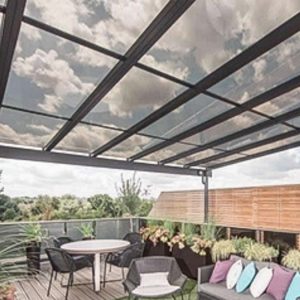
All are good questions or statements. Some are clichés. All deserve to be answered. Which takes me back to my last blog, where I stated, “I’m really pleased to be building and remodeling green in Houston” and even more pleased that I do not have to compete “with the Birkenstock-wearing hippies who ride their bicycles to work down the road in Austin.” With all due respect to my hippie friends in Austin, this point is worth exploring in greater depth. But please note my use of the term “hippie” refers to folks whose preference is to save the planet in part by intentionally grossly undervaluing and undercharging for the work they do. This is in contrast to those of us who desire to play a role in saving the planet but are not shy about charging a fair price for our expertise.
Houston is not known as a hotbed of green building (or green anything, for that matter), and to the best of my knowledge, there is not a large number of hippies building homes here, green or otherwise—which is one of the main reasons why I prefer to build green in Houston. Everybody always asks me why I haven’t moved to Austin, where everybody and everything is green. Wouldn’t it be easier to build green in Austin, they ask, where so many people know what green is all about. Unfortunately, in Austin, as in many other parts of the country, there are many more such builders who do not know the difference between an income statement and a balance sheet. And I would rather compete with a fellow MBA any day instead of some green building fool out there giving their work away.
But the biggest difference between us is that I do my tree hugging from 5 p.m. to 8 a.m., and they do theirs from 8 a.m. to 5 p.m. In other words, during the day I am trying to make a profit from green building so that by night I have the financial means to support whatever tree hugging activities otherwise I choose. And it would be very difficult for me (and you) to compete against folks who keep getting confused between mark-up and margin, whose financials look like a 501c3 instead of a for-profit builder.
We know that building green is all about saving money (vis-Ã -vis energy reduction), for our clients (and don’t be fooled, it’s the only thing that matters to most of mainstream America). And if energy use reduction is why our local, state, and federal governments have different programs to reward green building (through rebates, credits, and subsidies), then why can’t it be about the money for the green building community as well? Of course, I’m not saying reducing energy consumption is the only reason that folks build green or that governments subsidize green, but I am saying it is the primary driver.
So if homeowners and governments get to rank money as the deciding factor in the green choices they make, shouldn’t we? The short answer is yes, and we will continue to delve into the how in the weeks ahead.
Weekly Newsletter
Get building science and energy efficiency advice, plus special offers, in your inbox.















23 Comments
Equivalent R-value?
Michael,
Concerning Your LEED H Pilot Home in Houston....
http://www.greenhausbuilders.com/portfolio.html
What does "equivalent R-value of 40" mean?
Are you saying that 11 inch ICF walls in Houston will perform as well as "ordinary" R-40 walls?
Getting a little snarky, Michael!
Michael - I get that you don't like hippies, or Austin in particular. But I know there are plenty of builders and remodelers there who know how to read financial statements and even make a profit on occasion. I bet some of them are even your friends. Please leave the gross generalizations to a professional whiner (like me). Cheers
R Value Equivalent
Great question John! What the phrase "R Vale Equivalent" refers to is that in order to get an equal R value out of a traditionaly framed home as with the ICF we used, you would need to insulate that home with insulation of R-40. With the ICF I was referring to you get the benefits of the R-value of the block, it's thermal resistance and the incredibily low air infiltration rates. The only way to replicate that package in the traditional home is up your R-Value to R-40. Thanks for writing!
Professional whiners, hippies and friends
Carl who? :) Actually I'm cool with hippies (I'm a bleeding heart conservative) and I absolutely love Austin! My partners in fact think I spend more time there than in the office here in Houston. My gross generalization was not intended to be sublte so I am glad you picked it up. It can be taken literally but was really intended to be a metaphorical swipe at builders and remodelers, (pony tails or crew cuts) that do not know how to price out their services. But I know you know that already! I hope all is with you and look forward to some more good give and take!
Be careful with your claims
Michael,
Be careful with your R-value claims. Remember that the Federal R-Value Rule prohibits R-value exaggerations. (That's business advice. You want to minimize your liability.)
Some relevant quotes:
"Many manufacturers use the term 'equivalent R-value.' This really has no scientific meaning, and it often reflects optimum conditions and not necessarily climate conditions.” [Source: U.S. Department of Energy, 2004]
“Comparative analysis of sixteen different material configurations showed that the most effective wall assembly was the wall with thermal mass (concrete) applied in good contact with the interior of the building. Walls where the insulation material was concentrated on the interior side performed much worse. Wall configurations with the concrete wall core and insulation placed on both sides of the wall [that is, an ICF wall] performed slightly better, however, their performance was significantly worse than walls containing foam core and concrete shells on both sides.” [Oak Ridge National Labs]
"The benefit of thermal mass depends on climate. ORNL research has found that ICF houses use less energy than the typical wood-framed home. But the thermal mass benefits of ICF houses depend on location: Houses in Minneapolis and Chicago showed the least savings from the thermal mass effect, while those in Phoenix and in Bakersfield, Calif., had the most. In all cases, potential whole-house energy savings were 10% or less when the R-value of the wall was 25. Canadian researchers who closely monitored the performance of a multiunit residential building with ICF walls reported, "The overall building is relatively airtight, due in large part to the continuity of the ICF wall assembly, as no extraordinary air leakage control measures were undertaken at the roof and foundation levels." One of the researchers, Duncan Hill, commented, "The concrete is a poured-in-place air barrier." However, the researchers concluded that an ICF wall offers no thermal mass benefits in Canada. According to an article in Environmental Building News (see the link below), high mass can enhance energy performance, but only when outdoor temperatures cycle above and below the indoor temperature in a 24-hour period. In parts of the country where outside temperatures remain well below the indoor set temperature for weeks at a time, the mass effect isn’t really a factor. " [GBA Web site]
If the weather in Houston stays warm all night long during the summer, any thermal mass is useless.
Finally, according to "tests conducted by Oak Ridge National Laboratory (ORNL), the clear wall R-value for ICF walls is about 12, less than many builders assume." (This quote is from the same GBA encyclopedia page cited above.) I find it highly unlikely that a typical ICF wall performs as well as a well-built R-40 wall in Houston.
Profitability and Equivalent R-value
As a profitable business-hippie I have to say that the concept of sustainability is directly related to profitability. My business would not be sustainable if I was not able to make a profit and give meaningful incentives to my employees to stick around and service the warranties and maintain high customer satisfaction. It's true that I run my company out of my P&L and only look at my balance sheet in my monthly business coaching session with my accountant but that has been working fo rme for the last thirty years.
My father used to say "if your not making a profit, your not really in business" good words that seem to fit well with your theme here. He also used to say "just because the restaurant is full doesn't mean it's making a profit".. Many are entering job cost data into their accounting program and never going back to harvest the data and find out where their cost assumptions are valid and where they are fantasy. Without good accounting systems we are driving blind. I look forward to hearing what you have to say about the way you run your business.
I always like to ask about ten year plans and exit stratagies too. Were were you ten years ago and where do you plan to be ten years out? What happens to your company and it's systems and employees when you decide to walk away and go build orphanages in South America for your retirement? (or whatever your end of life dream is)
On the theme of "equivalent R-value" I think it is more appropriate to give definition to the comparison wall. I understand that 11" ICFs perform as well or better than a wall framed with 2x12's and insulated with two layers of R-19 batts installed as we normally see them which perform at somewhere around R-25.
I'd argue that 11" ICFs don't perform as well as a wall built with R-40 foam exterior insulation or even as well as an 11 1/4" double-frame wall filled solid with spider, foam, or even cellulose. To me the use of the term "R value Equivalent" ends up being very confusing. But this is a business blog here and perhaps its a little unfair to bring in this issue from your companies website.
ICF's are great at impact resistance and durability in a hurricane area though, and I love the story on the American polysteel site about the drunk who left the road at 90 miles an hour and totaled his car into an ICF house and didn't wake the home owner up or do serious damage to the house.
http://www.cement.org/homes/ch_newsletter2004-9&10.asp great images here!
Be well
M
It was a set-up
Michael,
I knew that Martin Would have a few "words for you"......
I think that these issues do belong in the Business section.
We are all guilty of regurgitating things that we believe to be true.
I have repeated many things that I later found to false.
I prefer to be corrected or at least challenged.
Martin has corrected me many times.
John Brooks
Welcome to the blogosphere eh?!
All that was missing to give to completely freak me out was Lstibruk jumping in! Thanks for the lifeline John, Chandler and Holladay definitely overhelmed me! All points well taken. Now that make heart rate is back down to a more survivable 160 bpm I'll go get my morning brew. Thanks guys!
You are welcome
The first time I ever posted anything... Martin let me have it..
Now teach us how to make money!
JB
Didn't mean to mug you
Sorry, Michael. I guess in retrospect I participated in the set-up. (But I didn't start it.) Enjoy your coffee.
Apologies here too
What a crowd Huh? Sorry about the pile-on and the timing. I too have the bad habit of checking E-mail before my morning brew. You should have seen the drama over at FHB Deans of Green when I dared to be critical of Cellulose! I actually lost sleep over that one and ended up asking the moredator to take down some of the more personal attacks so I've been there too.
You (and John) pulled some great information out of Martin though!
I'm completely with you on the need to be profitable to stay in business though keep it coming and we'll go easy on you next time. ;-)
Great discussion!
Great discussion here guys. Regarding the ICF vs. Batt insulation - With cost taken out of the equation I would prefer ICF over improperly installed batt insulation anyday all day long. Now, let's get some studies on the R-Value of an ICF home vs. a Batt Insulation home after 15 or 20 years.
In light of our recent housing situation home owners are looking at their homes as more of an investment than they have in quite some time. IMO, it looks as though we are headed in a direction where folks consider the HERS rating over R Value anyhow.
Sorry about changing Subject
Stephanie... in hindsight...
Perhaps I should have brought up my question/comment about ICF R-value claims in the Question Section
I did not mean to change the focus away from the "Business Side" Topic
Over time
Stephanie, good point about 20 years hence. What about 5 years? We just completed an energy audit on a 5 year old house that was "well" insulated yet the camera's reveal sagging insulation in the walls and over course the phone, cable and IT guys that worked on the house all pulled up insulation in the attic as they did their work. Now, we can help them reinstall that batts or do we just go up there and top it off with some blown in? Damn, if it had been sips or icf......... BUT, regardless, the ICF R value claims need to be put in context so that we can educate our clients on those pros and cons so they understand the difference. There is a reason it is "equivalent" after all and not straight up R-Value
Choosing between the two options
Michael,
Do you "reinstall that batts or do we just go up there and top it off with some blown-in?" That one is easy to answer: blow a thick layer of cellulose on top of the disturbed batts. The thicker the better. Of course, be sure to air seal the ceiling at all the usual trouble spots before proceeding.
cmnt
cmnt
two options answer
The client of course asks "can't you just straighten it out and it will be fine?" Well, we can straighten it out but it won't be fine so when we get finished we will top if off with an additional 6". And from below we seal all penatrations.
Some penetrations can't be sealed from below
Michael,
It's almost always better to seal ceiling penetrations from above, where access is better. The classic example: the only way to seal the long cracks between the drywall and partition top plates is from above. A lot of air leaks through these cracks. The air enters around electrical boxes in interior partitions, and leaves the house through the crack between the drywall and the partition top plate.
correct but....
We have all light fixtures and plate covers removed so we have good access to foam seal around the drywall and electrical boxes and also install gaskets. Cans are being changes to sealed cans. But you nailed it on the long cracks! We found them with the cameras and I never serious consideration becasue I did not think we has acess to do so. But in this case we do have access from the attic. good call!
Be careful with generalized statements!
Michael, you are blessed with a business environment that is condusive to your profits. If Houston was over run with green builders all of whom had great reputations and successful businesses you would find the competition thick and maybe your business would not be as profitable. Making generalized statements regarding your respect for people with an MBA as the only people that you would like to compete with, as opposed to the "pony tail wearing hippies", is an off-handed insult to those of us who may have the same knowledge base as you, but may have encountered business problems in building our businesses and establishing our worth. I live in a state that has one of the highest contractor per square mile ratios in the country. Green Building is just becoming mainstream again because of its connection with recent consumer education involving climate change and global warming. The Carter era saw a great influence in our state on building with renewable technologies and support for consumers as far as energy tax credits etc. Reaganomics killed that and green businesses that had been doing well went into the tank. Profits went down and many of us had to change or go out of business. Now we are basically starting our businesses over while the economy is weak and people cannot afford to spend. Having an MBA is great, but learning business through the years of experience also teaches valuable lessons. Services like Green Building Advisor bolster support and education for all of us, while sharing ideas as a community. I understand that your point is to value your services properly, and run your business efficiently, but your attitude exudes an arrogance that seems quite corporate and exclusionary. Isn't part of your job to foster more people to think about incorporating green building into their businesses. Whether they be "old hippies" or new young entrepreneurs it does not matter. Everyone needs to understand the worth of their services, while at the same time providing the consumer with a product that is well designed and constructed with quality and care. Learning our value may take time and may have some pitfalls, such as health, poor economy, etc. An MBA does nothing to overcome these pitfalls. It is the heart, stamina, willingness to continue educating oneself, and integrity of the person that carries them through. My point to you is, think about how you make a statement and how it may be perceived by the masses. It is obvious to me that you are a highly educated, successful builder, but you do not need to denegrate with sarcasm those that may be less successful financially but are still carrying the ball ethically and spirtually. Hopefully all of us will realize financial success through our green building experiences, while at the same time servicing our clients and helping our planet. Spoken like an "old hippie" with not enough hair for a ponytail.
Neither heart nor wallet is easy
As someone who is about to start his 4th LEED-H project, I struggle with both the desire to make money and the desire to do socially valuable work. We only got back into new construction because we didn't see anyone building the houses we thought should be built (smaller and very efficient), so I think the first issue is Green Building can't be seen as just another of your products - cynically promoting "green" (whatever that means anyway) will, hopefully, backfire.
I look at profit as, among other things, the way my business stays in business. If I (or my company) isn't here in 10 or 20 years to work on the houses we're building and the renovations we're doing, I think both the house and the client is worse off. Profit allows the business to deepen if not grow. Of course I'm still not making much of it but that's another issue.
On the other hand, while I can't imagine not building efficient homes, I also know that it alone isn't going to solve the consumption problems.
All about the bottom line?
What about principle? Environmental responsibility? I get the point of this business blog, but making a profit should not be the reason for jumping on the green bandwagon. I've heard it in way too many workshops and lectures.... "make some green, by going green..." and silly seminars on "How your company can become green." As if its just a quick little adjustment to one's business model.
I think people focus way too much on profit, and not enough on principle and commitment.
Then again what do I know... all I have is a bachelor's degree with a minor in business.
Principle vs. Profit
Edward, Dan, Brett I appreciate the comments but again need to reinterate that my comment "can be taken literally but was really intended to be a metaphorical swipe at builders and remodelers, (pony tails or crew cuts) that do not know how to price out their services." I am making no statement about principle or doing scoially valuable work. My perspective is one of a green custom builder and remodeler. I make a living working for upper middle class homeowners who have the financial ability to pay for my expertise and I have no qualms about charging for it. I strongly believe there are many other green builders whose formal and informal education far exceeds mine yet by putting environmental responsibilty first they miss the opportunity to capture a profit that will enbale them to support non-profit efforts in their community. If one wants to be non-profit green builder carrying out a commitment to social responsibility I think that is great. However, don't rationalize that that cost plus 5% is doing the environment a favor. It's not. Make the money your experience and reputation deserve, capture the 20% gross profit the market can allow and use those profits to do good. Making money does not have to be the reason to jump on the green bandwagon or any bandwagon for that matter, but jumping on the green bandwagon certainly shouldn't be the reason for making less than you are qualified to earn. As I tell our production managers, making a profit during the week from 8-5 is what enables us to support our community on the weekends-don't give your expertise away for free!
Log in or create an account to post a comment.
Sign up Log in